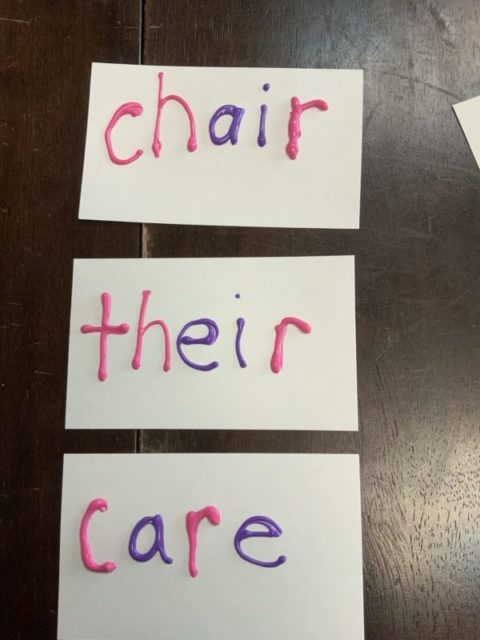Read this to learn a simple approach to help your child with multisensory learning.

What is Multisensory Learning
As we’ve discussed previously on this website, a multisensory approach to learning is based upon the idea that students often learn best when the material is presented to them with all of their senses. For example, the teacher (or parent) uses as many senses as possible to teach. The sensory information can include: movement, touch, visual, auditory, taste and smell to learn to read, write, spell, and learn math.
Who Benefits from Multisensory Learning?
Multisensory approaches are often very helpful for children with learning disabilities, such as Dyslexia (Reading Disorders), Dysgraphia (Disorders of Written Expression), and Dyscalculia (Math Disorders). They can also be very useful to children who struggle with language concerns, executive functioning delays, and Attention Deficit Hyperactivity Disorder. However, multisensory approaches help all students.
Puffy Paint Technique For Multisensory Learning
Ages: PK-6
Materials: Puffy paints, Note cards, pencils, scented markers, craft supplies, possibilities are endless
With this technique, parents and children can use puffy paints to make notecards for children to learn, rehearse, and practice educational information. The information can be tailored in several ways to meet your child’s needs. Below are some examples:
Using Puffy Paint as a Multisensory Approach For Reading, Writing, and Spelling

1. Parents can write a simple word on a notecard. The child can use the puffy paint to trace the letters. Vowels and consonants can be different colors. Different letter groups (morphemes) could also be in different colors. Once the paint is dry, the child could trace the letters, words, or morphemes with their finger. If the child is struggling with a particular letter, they could trace this letter with a scented marker.
2. Another approach for practicing writing involves tracing. After the parent has written the words in puffy paint, and once the paint is dry, the child can trace the letters, morphemes, or words with their fingers, and then a pencil.

3. A third strategy to build fine motor skills could involve sticking things like little candies, beads. cheerios, or decorations to the paint when it is drying. A parent could also just have the child use decorations for letters or words that are difficult for them.
Using Puffy Paint as a Multisensory Approach For For Math

1. Parents can draw numbers on the cards. Children could trace the numbers with puffy paint (or the parent could do this as well). Parents and children could make dots next to the number to help represent the quantity. (For example, put 5 dots next to the numeral “5”).
2. As children learn math calculations, the parents continue to place the dots next to the numbers. Children can count them, and have a more concrete representation of the numbers. They can feel the numbers with their fingers as they count, as well as feeling the dots with their fingers. Parents can also use different colors for the dots and the numbers or for the “+” or “-“ signs. Parents could also use scented markers or essential oils to help signify certain numbers, mathematical signs, or cues.
Using the Puffy Paint Notecards for Review
Parents and children can keep the cards for review. They could embellish with many different kinds of art supplies with varieties of textures, colors, smells, and sensory information.
The main purpose of this activity is to make learning enjoyable, and to use as many different senses as possible. The possibilities are endless!
![]()
